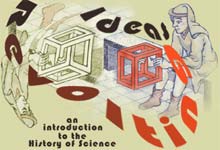
University of California, Irvine
Instructor: Dr. Barbara J. Becker

|
|
|
|
What, exactly, is electricity? When we look in our Microsoft
Encarta encyclopedia, we see that electricity is defined as a "class of
physical phenomena resulting from the existence of charge and from the
interaction of charges." What does this mean, in layperson's terms?
It means that whoever wrote the Microsoft Encarta encyclopedia is a big
fat dope. Because we know from our junior high school science training
that electricity is actually a fast-moving herd of electrons, which are
tiny one-celled animals that can survive in almost any environment except
inside a double-A battery, where they die within minutes.
--Dave Barry |
All substances can be electrified by friction. Electrical fluid must be universally fixed in matter. Electrical activity, unlike gravity, can be controlled in experiment
|
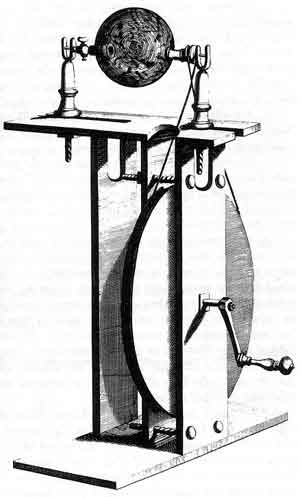
Francis Hauksbee's Electrical Fluid Generator (c. 1705) |
| collect it, |
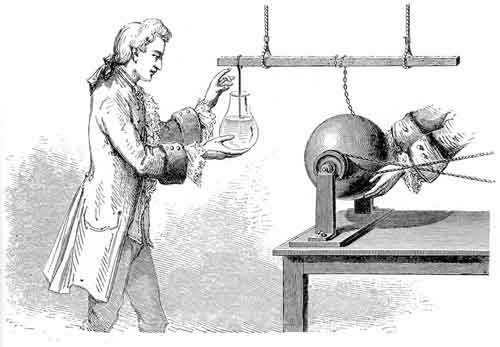
The Leyden jar: In Leyden, Holland (1746), Petrus van Musschenbroek (1692-1761) filled a jar with electrical fluid. |
and measure it.
|
Charles Coulomb (1736-1806) 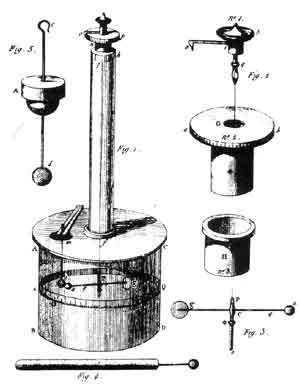
Coulomb's Torsion Balance (1785) |
Strength of electrical force can be measured and calculated in a manner
analogous to that of gravity:

|
|
|
Subtle fluid model spawned --
|
|
|
Jan Swammerdam (1637-1680)

Is muscle fiber imbedded with "nervous fluid"? -- Swammerdam (1664)
|
Luigi Galvani (1737-1798)
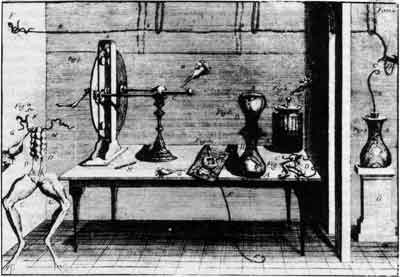
Electricity causes muscles to contract -- Galvani (1781) |
Pierre Bertholon de Saint-Lazare (1742-1800)
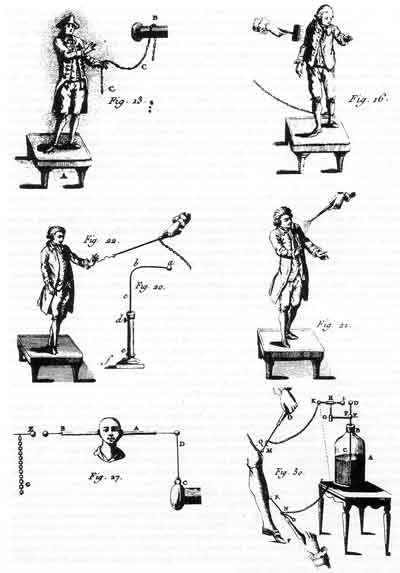
Disease can be treated by exposure to electricity -- Bertholon (1786) |
Alessandro Volta (1745-1827)
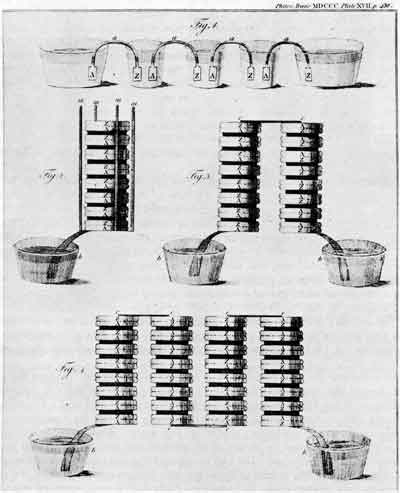
Are chemical and electric fluids different manifestations of the same thing? |
William Herschel (1738-1822)
Are luminous and caloric effects different manifestations of the same thing? |
Johann Ritter (1776-1810)
Are luminous and chemical effects different manifestations of the same thing? |
Hans Oersted (1777-1851)
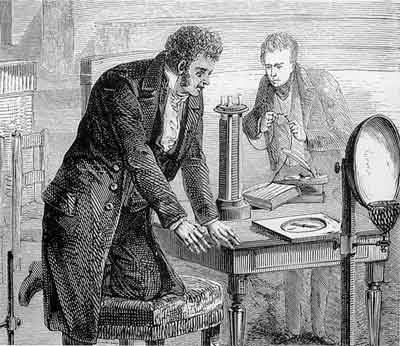
Are magnetic and electric fluids different manifestations of the same thing? |
If subtle fluids are supposed to act independently, how can apparent relationship between chemical effects, animating action, and electricity be accounted for?
Experiment forces nature to behave abnormally.
New view [held by Naturphilosophen]:
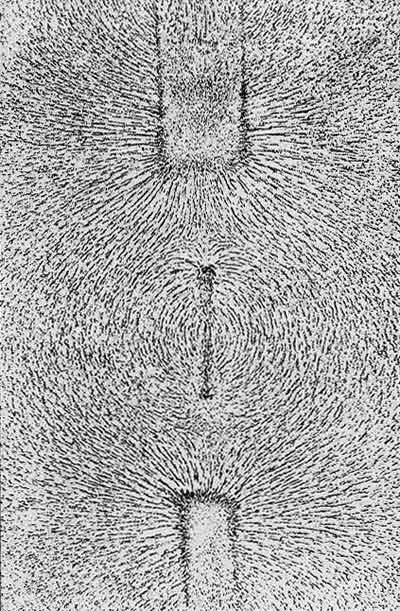
Iron filings reveal the magnetic "tension" between opposite poles in the space surrounding a magnet. |
|